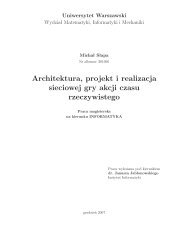Portugal
Portugal
Portugal
Create successful ePaper yourself
Turn your PDF publications into a flip-book with our unique Google optimized e-Paper software.
24<br />
PORTUGAL IN DEPTH<br />
2<br />
THE LAY OF THE LAND<br />
Obviously, extensive rebuilding had to<br />
follow the devastating earthquake that<br />
destroyed much of Lisbon in 1755. As a<br />
result of this earthquake, the Terreiro do<br />
Paço was created, and it remains today one<br />
of the great squares of the world, forming<br />
the official entrance to the city of Lisbon.<br />
A royal palace at Queluz (p. 180) was<br />
constructed in 1787 and is similar to the<br />
palace of Versailles outside Paris. Rococo<br />
art, coming in the wake of the baroque,<br />
found few adherents in <strong>Portugal</strong>.<br />
A great sculptor rose out of the 18th<br />
century, Joaquim Machado de Castro<br />
(1732–1822). He cultivated terra-cotta<br />
relief, and did so with great delicacy and<br />
restraint.<br />
LATE 18TH TO THE 19TH CENTURY<br />
Political upheavals dominated this period.<br />
Portuguese architects worked in a medley<br />
of styles, their buildings having no national<br />
identity. The conservative taste of both the<br />
people and the government ruled the day,<br />
although Ventura Terra, who died in<br />
1889, was a forerunner of the 20th century<br />
international style.<br />
The artist of the day was António de<br />
Sequeira (1768–1837), who was court<br />
painter in Lisbon in 1802. He drifted into<br />
Romanticism, and was mainly concerned<br />
with man’s personality and purpose. He<br />
was also an artist of great perception, and<br />
evolved into a master of chiaroscuro, balancing<br />
light and shade in a painting.<br />
In sculpture, Teixeira Lopes (1866–1918)<br />
became a dominant figure. Born in Porto,<br />
he is known for his monument to the novelist<br />
Eça de Queirós which stands in Lisbon.<br />
Among painters, Columbano Bordalo<br />
Pinheir (1856–1929), achieved renown<br />
<strong>Portugal</strong> has a coastline stretching some<br />
500 miles. It’s bounded on the south and<br />
west by the Atlantic Ocean and on the<br />
north and east by Spain. Continental<br />
with his portraits and still lifes. A sense of<br />
French Romanticism prevailed in his paintings.<br />
He often posed his subject in a dramatic<br />
light against a cloudy background.<br />
20TH CENTURY In the first decades of<br />
the 20th century, Art Nouveau and Art<br />
Deco began to occupy the architects of<br />
<strong>Portugal</strong>, especially in the cities of Coimbra,<br />
Leiria, and Lisbon. The Museu<br />
Gulbenkian (p. 130) in Lisbon definitely<br />
moved <strong>Portugal</strong> into the foreground of<br />
modern architecture.<br />
From the Porto School of Architecture<br />
emerged Álvaro Siza, who was commissioned<br />
to restore the Chiado quarter in<br />
Lisbon, which was devastated by a fire in<br />
1988. In the 1980s Tomás Taviera distinguished<br />
himself by constructing in Lisbon<br />
a postmodern Torre das Amoreiras.<br />
In sculpture, the towering figure of the<br />
20th century was Francisco Franco<br />
(1885–1955), who designed many commemorative<br />
monuments to the dictator<br />
Salazar.<br />
No giant figure arose in painting,<br />
although many Portuguese modern artists<br />
have distinguished themselves, including<br />
Almada Negreiros (1889–1970), who was<br />
influenced by Cubism, as well as Maria<br />
Helena Vieira da Silva (1908–1920),<br />
who was influenced by the Portuguese<br />
azulejos (tiles) in her works, especially the<br />
color in her paintings. Amadeo de Souza<br />
Cardoso (1887–1918) found his motif in<br />
the development of Cubism and shows the<br />
influence of his friend, Modigliani.<br />
Lourdes de Castro, José de Guimarães,<br />
and Júlio Pomar are among some of the<br />
leading contemporary painters of the 20th<br />
century.<br />
4 THE LAY OF THE LAND<br />
<strong>Portugal</strong> totals some 34,000 square miles;<br />
its Atlantic islands, including Madeira and<br />
the Azores, extend the size of the country<br />
by another 1,200 square miles. The Azores





